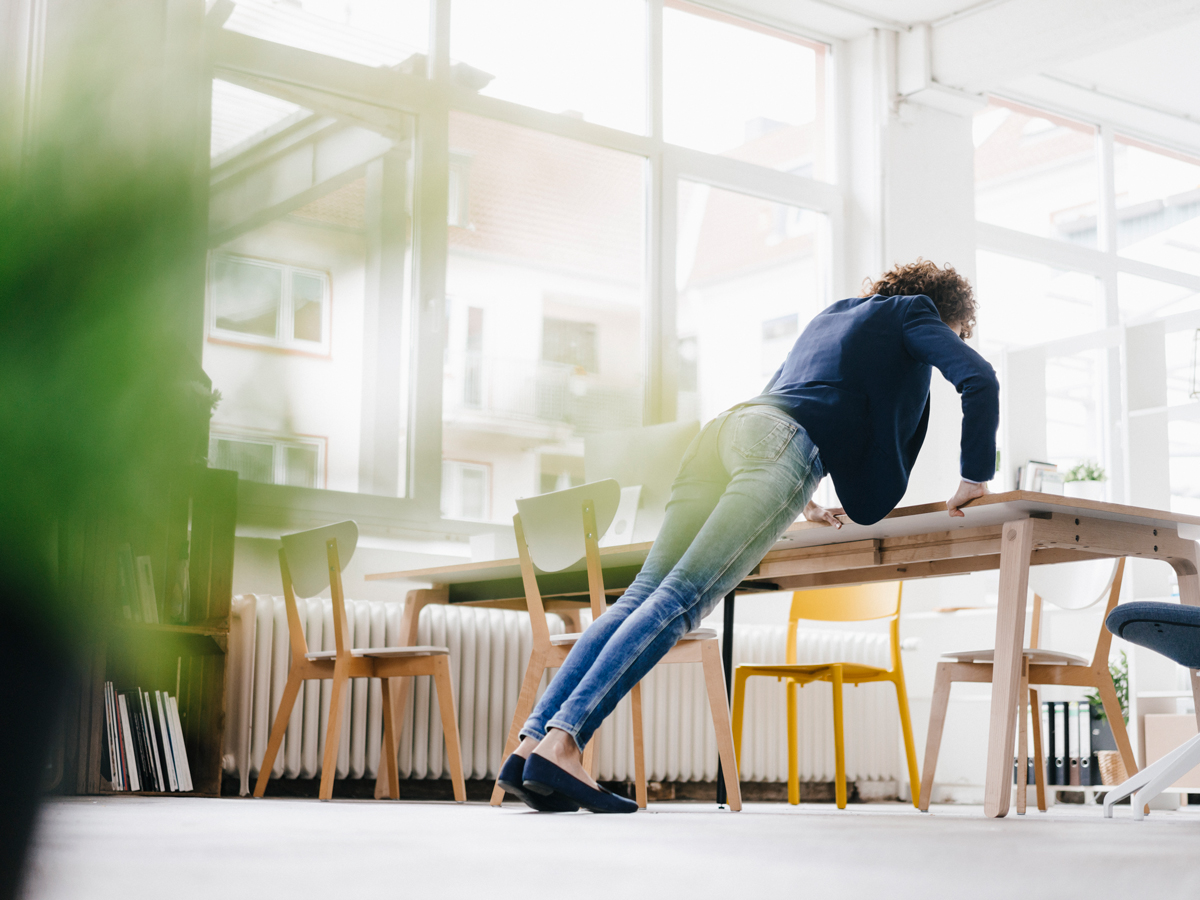

Have you ever heard of desk yoga? It’s a practice that helps relieve stress and offers numerous benefits for those who spend long hours sitting at the computer.
Lack of movement and prolonged immobility can lead to muscle pains, tension, and poor posture; consequently causing a drastic decline in our well-being.
And when you don’t have the time (or motivation) to go to the gym or engage in any physical activity, desk yoga is an easy, accessible, and effective solution.
With simple and quick exercises, doable directly at your work station, this practice helps relax muscles, improve blood circulation, and reduce accumulated tension in the upper body. Additionally, it promotes better posture and increased awareness of breath; essential elements to maintain physical and mental well-being throughout the workday.
So here are a series of targeted exercises that you can easily do in 5 minutes during your coffee break, which will change your day (and life) for the better.
8 Desk Yoga Exercises to Do Every Day to Relieve Stress and Rediscover Well-being at Work

Mindful Breathing
The practice of mindful breathing is essential for relaxing the mind and reconnecting with your body during a hectic workday.
With closed eyes, focus on deep inhales filling the lungs and exhales releasing tension and stress. Repeat for at least 5 breaths, focusing on the steady rhythm of breathing.
Shoulder Rotations
Shoulder rotations help release tension accumulated in the upper back, improving flexibility and reducing the risk of muscle tension caused by sedentary posture.
While sitting with a straight back, bring both shoulders up towards the ears as you inhale deeply. Then, exhale and rotate the shoulders down and back, bringing them into a relaxed position. Repeat this fluid movement for 8-10 times.
Spinal Twist
Spinal twists promote back flexibility and help prevent lower back pain. Additionally, they stimulate blood circulation in the abdominal area, improving digestion and overall well-being.
Sitting with a straight back, place your right hand on the left armrest of the chair and your left hand on the back of the chair. Inhale, lengthen the spine upward. Exhale, twist the torso to the right, using the hand on the chair for support to deepen the twist. Repeat at least 6 times, alternating twists to the right and left.
Neck Stretch
This simple desk yoga exercise helps relax the muscles of the neck and shoulders, often fatigued from prolonged computer use. It can also reduce tension in the cervical joints and improve neck mobility.
Drop your chin to your chest, then, very gently, rotate your head to the right, bringing your ear towards your shoulder. Hold the position for a few seconds, feeling the stretch along the side of the neck. Repeat on the opposite side for a total of 10 repetitions.

Wrist and Hand Stretch
Wrist and hand stretching is particularly beneficial for those who spend a lot of time at the computer. It helps prevent carpal tunnel syndrome pain and maintains flexibility in the hand and wrist joints.
Simply extend your arm forward with the palm facing up, and with the other hand, gently bend the fingers downward, applying light pressure to increase the stretch. Hold the position for a few seconds and then switch arms.
Leg Stretch
Leg stretching is one of the best desk yoga exercises. This movement helps counteract muscle stiffness resulting from prolonged sitting, improving blood circulation in the legs and reducing the risk of muscle fatigue.
Sit on the chair, extend one leg forward with the heel on the ground and toes pointing upward. By doing so, you’ll feel the stretch along the back of the leg. Hold the position for 5 seconds, and then repeat the movement with the other leg. Remember to keep your back straight and avoid bending the body too far forward.
Lower Back Stretch to Relieve Stress
Stretching the lower back promotes relaxation of the lumbar muscles, reducing compression of the spine and alleviating pain associated with sedentary posture.
Sit on the chair, slowly bend your body forward from the waist, bringing your chest towards your thighs. You’ll feel a stretch in the lower back and along the spine. Stay in this position for a few deep breaths and then return to the starting position while keeping your back straight.
Active Relaxation
After a day spent sitting at the desk, freely and dynamically moving is what we need.
Active relaxation exercises promote better blood flow, contributing to the distribution of nutrients and oxygen throughout the body. Not only that, they can reduce muscle tension and promote the release of endorphins, those chemicals that promote mental and physical well-being.
Standing behind the chair, take a few moments to move freely, as if it were a dance. Start with shoulder rotations, then continue with steps in place, perhaps even on tiptoe. Add some arm movements, maybe raising them above your head and moving them back. Repeat these free movements for a few minutes until you feel more energetic and ready to return to work.
Move to Improve Your Focus: 3 Easy Exercises to Do
Here’s Why You Shouldn’t Sit for Too Long, According to a Study
This article first appeared on Grazit.it













